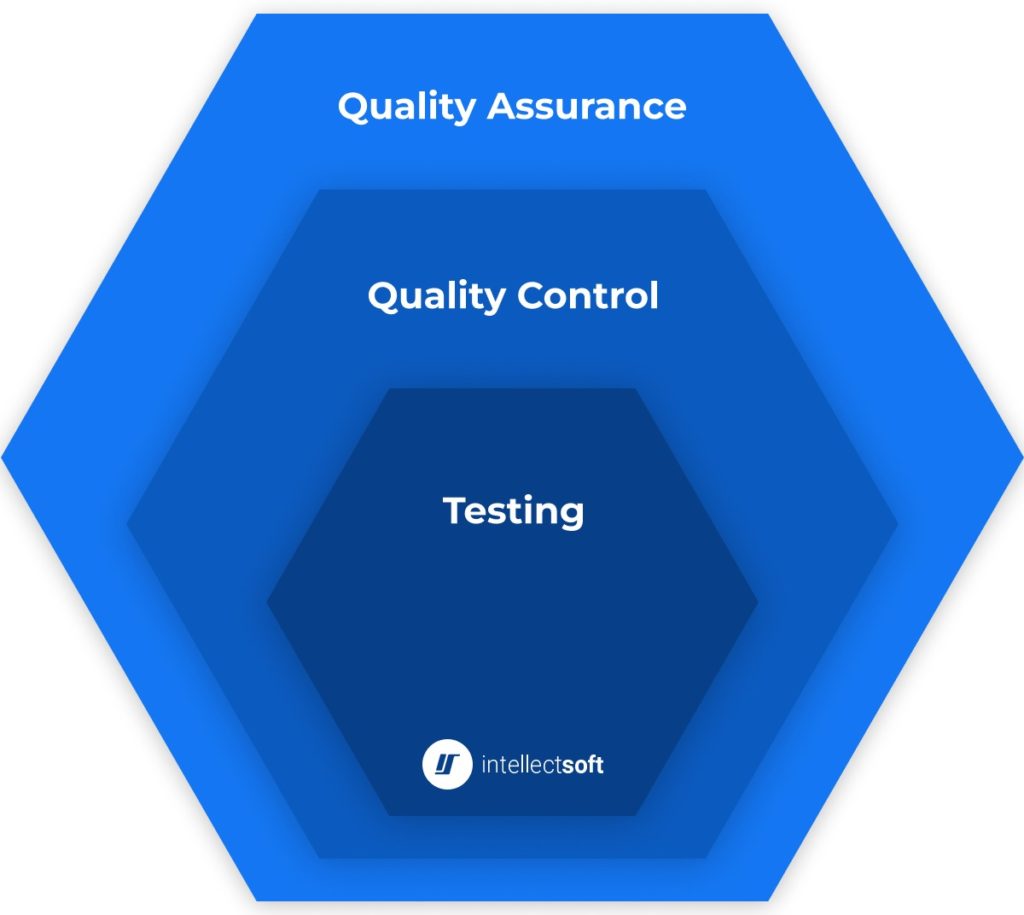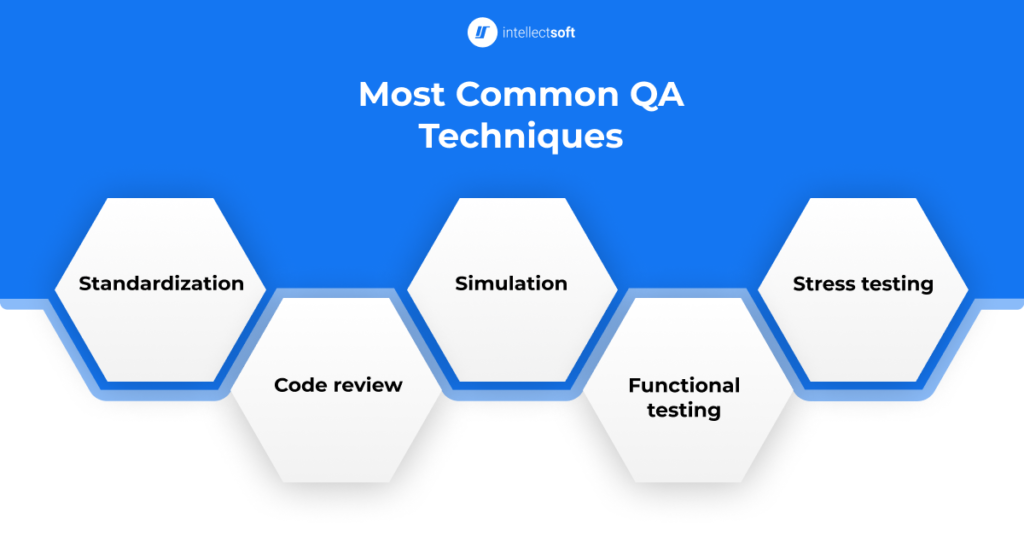Regardless of the scale, software development always involves an investment of resources. If the quality of the final product is failing, the resources will be wasted. The funds will be gone forever and the investors will lose money, time, as well as potential profits and sometimes even damage their reputation. That’s why quality assurance is perhaps the most prioritized process in software development.
What is Quality Assurance in Software Development?
Quality assurance, or simply QA, is a complex process that covers several stages of ensuring the required standards of quality. In software development, this process involves a wide range of measures and starts long before writing the first lines of code. It includes proper planning of the development process, as well as evaluating, controlling, and testing the quality of a product throughout its creation. QA also covers optimization and reporting routines which will be described later in this article, along with other components of quality assurance.

The Role of Quality Assurance in Software Development
One can safely say that quality assurance is of vital importance in software development. It is true not only because of financial reasons. Though business priorities always revolve around money, QA also protects reputation. A software product with subpar quality can lead not only to financial losses but also to the loss of trust of customers and business partners. This could be a fatal blow to the startup or a company.
As a result, entrepreneurs highly appreciate the importance of QA, particularly in the field of IT. They understand that time and money spent on ensuring the quality of a software product are fully justified. It is highly important to find and correct errors in software as early as possible. The longer those flaws remain undetected and unresolved, the bigger risk they represent and the more difficult it is to fix them.
The role of QA in software development is much larger than just testing and finding bugs. It goes beyond quality control to the field of methodology. In particular, quality assurance deals with means and standards to organize the development process in such a way that prevents the appearance of errors. In other words, QA specialists research how to satisfy the client’s requirements while eliminating potential vulnerabilities and defects. This analysis at an early stage of development prevents a lot of trouble that may arise at subsequent stages.
The Quality Assurance Process in Software Development
Considering its major importance, quality assurance is not performed chaotically but as a strictly specified process. Some people, who are familiar with various models of the software development life cycle, believe that QA is just a step generally called “testing” in this process. However, this common misconception is far from the truth.
Difference between Quality Assurance and Quality Control
Quality assurance extends throughout the whole software development process. Let’s take, for example, a conventional “waterfall” model of the software development life cycle. It has five phases or stages: analysis, design, coding, testing, and operations. The purpose of QA is to make sure that all the processes in those phases are performed according to the respective quality standards.
Product testing is the task of Quality Control (QC), which in its turn is a component of an extensive Quality Assurance (QA) routine. It is a crucial stage before the deployment or release of a software product. However, it is necessary to distinguish QA and QC.
Quality Control focuses on ensuring the quality of a product by performing tests, finding flaws, and correcting them. QC also determines if the product meets the client’s requirements. Testing, bug fixing, optimization, and other aspects of Quality Control must be completed before the product or feature moves to the deployment stage of the development process.
Quality Assurance oversees the processes during software development to prevent errors by abiding standards, implementing efficiency metrics, performing verifications, etc. So, the main difference between Quality Assurance and Quality Control is that QA is more extensive and process-oriented, while QC is more focused and product-oriented.
QA Standards for Software Development
To make quality requirements more uniform, engineers have designed specific strict rules and practices to be applied in various industries. The International Standards Organization has a family of standards for quality management labeled ISO 9000. Within this family, the document ISO/IEC/IEEE 90003:2018 sets specific guidelines for implementing the standard ISO 9001 for a quality management system in the field of software engineering.
Most Common Techniques in QA
Quality Assurance specialists have several methods and established processes at their disposal. As an example, five of the most widely used techniques in the context of software development are briefly described below.

- Standardization. This technique is used to determine whether the product, feature, or process satisfies the applied standard. In this context, the standard in question is usually ISO 9001.
- Code review. This activity represents the “classic testing” aimed at finding bugs in the code and is most commonly associated with QA. This is one of the crucial steps to prevent flaws from becoming bigger problems at subsequent stages of the software development life cycle.
- Simulation. This technique allows developers to observe how the simulated program would behave under normal working conditions. This is done when the software build is not ready physically, so a virtual model is created.
- Functional testing. Specialists use this technique to see what the current build of the software can do in the context of its intended functions.
- Stress testing. As the name implies, stress testing is intended to show how the software can handle situations that exceed normal working parameters. For example, one of the most common scenarios is the performance of an app when too many users are trying to access it at the same time.
It should be noted that this list is merely illustrative and not exhaustive. Many other techniques can be used for QA purposes, including auditing, static testing, design analysis, etc.
PDCA Cycle in Software Development
One of the quality assurance methods in software development is the PDCA cycle. It is used as a repetitive process of making changes for the improvement and optimization of features and products. The cycle consists of four steps that are repeated until all flaws are corrected. The names of the steps make up the abbreviation “PDCA”:





